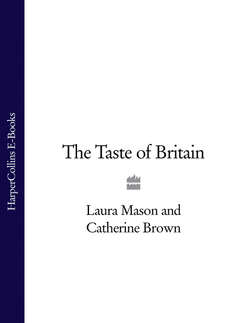Читать книгу The Taste of Britain - Hugh Fearnley-Whittingstall - Страница 46
HISTORY:
ОглавлениеThis is one of many goat’s milk cheeses which have become so important in British artisan manufacture during the last 40 years. Before, with the exception of a few families who kept milking-goats as a hobby or to provide milk for children allergic to that of cows, not many paid attention to making goat’s cheese and none reached the market place. During the 1960s and 1970s, interest in self-sufficiency and small-holding led to the greater popularity of goat’s milk products. This was given extra momentum by changes in agriculture and the necessity for diversification in the 1980s. There are now many well-established makers of goat’s cheese, spread throughout Britain, with concentrations in Kent and Sussex, North Yorkshire, Cumbria and the Scottish Borders. Though receiving little support from government and small in volume, this is a dynamic and creative sector. Recipes may be inspired by French examples or British originals evolved through trial and error. It is impossible to list them all. British taste generally leans towards young, cream-textured cheeses characterized by a mild goat flavour and slightly acid freshness, although some people do make mould-ripened, soft cheeses, or hard, pressed cheese, or blue cheeses using goat’s milk. Vulscombe is based on the acid curd method, used by cottagers and farmers’ wives during the eighteenth and nineteenth centuries to make small quantities of fresh soft cheese for immediate consumption.
